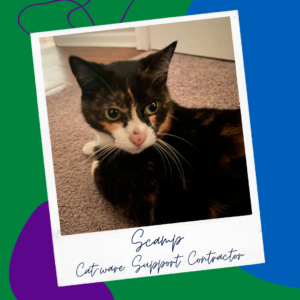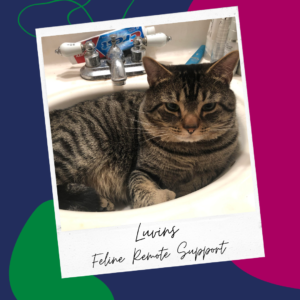What’s new at Inera and around the industry
September/October 2022 Newsletter
XUG registration is open and the full agenda is posted!

You can now register for the 2022 eXtyles User Group Meeting (XUG), which will be held online on October 26 (afternoon) and 27 (morning).
We’re excited to share our news and discuss publishing challenges and visions for the future with the eXtyles user community!
The full meeting agenda is available on the XUG page. This year’s XUG will include:
- A look at what the Inera team has been working on and what’s on the horizon
- Customer and partner presentations showcasing innovative applications of eXtyles
- eXtyles highlights: Key features and solutions that can improve your workflow
- A panel presentation on disability inclusion and accessibility in publishing
- XUG favorites: What’s new with the JATS family of DTDs from Debbie Lapeyre, industry updates from Bruce Rosenblum
People of Inera: Gianna Flores
This feature will introduce you to newer Inera team members and help you get to know not-so-new team members better.
Gianna joined Inera in October 2021 as our Editorial Software Support Specialist, so if you’ve sent in a support query in the past year, you may recognize her name! She has recently begun dipping her toes into configuration and testing, so she can answer a wider range of customer queries. And if she doesn’t have the answer, she’ll find somebody who does and get right back to you!
What’s your favorite thing about your job at Inera?
This might sound really corny, but my favorite thing is probably the people I get to interact with—whether colleagues or customers. I feel like I’m always learning something new, and it’s really interesting to get different perspectives from different types of people. When I’m doing tech support, I might talk to Joni or Jenny or Robin, and it’s just so interesting learning from people who have such a wide breadth of knowledge.
And it’s always fun. Everyone is so friendly, knowledgeable, and understanding. It’s a very supportive team, where I don’t feel bad asking questions. It’s a wonderful environment, and I love that!
Tell us about your pets!
 We don’t have any animals of our own right now, but we are currently watching a family friend’s cat. Her name is Scamp, but I call her Scampersand because I think it’s funny. She’s this tiny, tiny little cat—her head is probably smaller than the palm of my hand—and I love her. She’s super shy and elusive, and she loves to hide in little corners, but she’s really warmed up to us lately—rubbing against my legs and batting my arm for pats at four in the morning.
We don’t have any animals of our own right now, but we are currently watching a family friend’s cat. Her name is Scamp, but I call her Scampersand because I think it’s funny. She’s this tiny, tiny little cat—her head is probably smaller than the palm of my hand—and I love her. She’s super shy and elusive, and she loves to hide in little corners, but she’s really warmed up to us lately—rubbing against my legs and batting my arm for pats at four in the morning.
 Back with my parents in Massachusetts, I have a cat named Luvins. He’s six, and he’s really sweet. He loves climbing on shoulders. He knew when I was moving, so he would spend every day in my room with me. I miss him so much! My parents wouldn’t let me take him, because they said he’s the “family cat,” but the truth is, he’s my cat. He was my 18th birthday present! He’s my baby; I would swaddle him like a baby on my shoulder, and I also taught him tricks. He knows to jump up and touch my hand and bump it to give a little kiss, he’ll go in little circles, he sits. He’s a good little guy!
Back with my parents in Massachusetts, I have a cat named Luvins. He’s six, and he’s really sweet. He loves climbing on shoulders. He knew when I was moving, so he would spend every day in my room with me. I miss him so much! My parents wouldn’t let me take him, because they said he’s the “family cat,” but the truth is, he’s my cat. He was my 18th birthday present! He’s my baby; I would swaddle him like a baby on my shoulder, and I also taught him tricks. He knows to jump up and touch my hand and bump it to give a little kiss, he’ll go in little circles, he sits. He’s a good little guy!
What are 3 fun facts about you?
- I have a degree in writing, literature, and publishing, with a concentration in publishing, from Emerson College. But I started out as a film major with a concentration in cinematography! Ironically, that put me off TV and movies for a few years: it helped me refine my tastes, but also made it hard to find media I enjoyed … and I didn’t want to be pretentious. I like media that’s really engaging; I pay attention to detail, and I can’t really find anything that scratches that itch. In retrospect, it was such a valuable experience because of how it informed my perspective on visual media.
For example, my fiancé and I recently rewatched Breaking Bad, and I had a very different perspective from my first time watching it starting in 2013. I just picked up on so many little details that I couldn’t before. And that relates back to writing as well, where I ended up majoring. I think the two really go hand in hand—they’re just two different forms of media. It really helped me grow in appreciation for subtle details of world- and character building—just having that experience with majoring in English, combined with my past in cinematography.I really recommend that people learn about cinematography—you don’t need to take a class, just read about it online—if they enjoy visual media, because you get a whole new perspective. I think it’s interesting that some people are in separate camps, books versus movies and TV, when actually they go hand-in-hand, and you develop an appreciation for both literature and media by seeing the value in each of them. - I really like anime and video games. I cosplay and sew; I’ve really gotten back into that in the last few years.
- I can put my foot behind my head. I’m very flexible and strong. I think flexibility is really important, so it’s something that I try to keep up. I’m very into fitness; I really love working out, and weightlifting specifically.
What superpower would you choose, if you could only have one, and why?
This one was hard. I went with flying—I don’t know how that would work with air traffic control, but it’s a fast and efficient way to travel, and traveling is cool and fun, but really expensive.
I was going to choose teleportation, but what if I get stuck? What if my luggage doesn’t come with me? So I would want to fly.
I don’t know how that would work temperature-wise either, but it’s okay; we won’t think too hard about the details. I’ll just have to master homeostasis, and then I’ll work on my strength some more to carry my luggage. And then I can go back and forth really fast too!
What we’re reading: Autumn potpourri
On JPHMP Direct—a resource-rich companion site to the Journal of Public Health Management and Practice—researchers and journal editors Erika Martin and Justin B. Moore round out their series on peer review with this friendly and practical guide to writing constructive peer review reports (and why it’s important to do so). While the whole post is full of wise and supportive advice for the new or struggling peer reviewer, we particularly like tip #9: Be kind to editors. (via Retraction Watch)
*
On their blog, Indigenous Corporate Training Inc. explains why we shouldn’t use “bury the hatchet” and several other colloquial expressions that are disrespectful of Indigenous customs or derive from negative stereotypes. The blog is an invaluable resource on a wide variety of topics related to Indigenous peoples in North America; perhaps most relevant to us in the publishing technology space is this post on the meaning and implications of the International Decade of Indigenous Languages. (via Better Allies)
*
Video content from NISO Plus 2022 is now freely available! We especially recommend this session on accessibility in the scholarly information space and the accompanying discussion.
And speaking of accessibility, check out this interview with Simon Holt, disability confidence manager at Elsevier, on the Against the Grain podcast; and this new accessibility learning hub for publishers, which includes resources on metadata, image descriptions, and more!
*
Publishing research on monkeypox? The MeSH taxonomy now has you covered! Get all the details in this NLM Technical Bulletin.
Also new from NLM is this fascinating interview with Kylie M. Smith, PhD, on her research into racial segregation in health and mental health care, which appears in conjunction with her James H. Cassedy Memorial Lecture, “Jim Crow in the Asylum: Psychiatry and Civil Rights in the American South.” The talk was video recorded, and you can watch it on the NLM video archive.
Find Inera at upcoming conferences
► Typefi User Conference 2022
October 13 | Geneva, Switzerland
Typefi is hosting its first User Conference in over 3 years this October in Geneva! Attendees will join the Typefi team for a day of informative discussions with plenty of time to catch up in person. Robin Dunford, Senior Solution Architect, will be attending from Inera.
► Frankfurt Book Fair 2022
October 19-23 | Frankfurt, Germany
You’ll find Robin Dunford at stand G13 in Hall 4.2.
Attending one of these events? We’d love to see you—please contact us if you’d like to schedule a meeting.
Word Tips: What’s a PDF/A, and should you use it?
ℹ️ Our Word Tips are tested on recent versions of Word for Windows. If you are using Word for Mac, which has a smaller feature set, your mileage may vary.
What’s a PDF/A?
Defined by ISO 19005 and also known as PDF-A and PDF-a, this format (the A is short for “archive”) is a variation on the standard PDF that’s designed for long-term archiving and document preservation.
That means two sets of things. First, as you might expect, a PDF/A must be self-contained: not only text but all the fonts, graphics, and color information must be embedded, so that no external information is necessary for the document to render. The file must include standards-based metadata.
Second is a list of elements that a PDF/A file can’t contain, including audio content, video content, any executable file or JavaScript, embedded files, layers, and external content references.
Why might you need a PDF/A file?
As explained in this 2022 post from the PDF Association, PDF/A is designed for files that need to have a long lifespan (legal documents may fall into this category, for instance) and must render exactly the same way on future devices or platforms.
How do you make a PDF/A file from Word?
To save a Word document as PDF/A instead of regular PDF, here’s how to proceed:
- In the Save As dialog, choose PDF from the Save As Type drop-down list.
- Click Options to display the Options dialog.
- Check the box for PDF/A Compliant (ISO 19005-1), then click OK.
- Enter the filename you want, then click Save.
To learn more about PDF/A, its two flavors (PDF/A1 and PDF/A2), and other things PDF, visit the PDF Association website.
💡 You can always find more Word Tips in our newsletter archive!